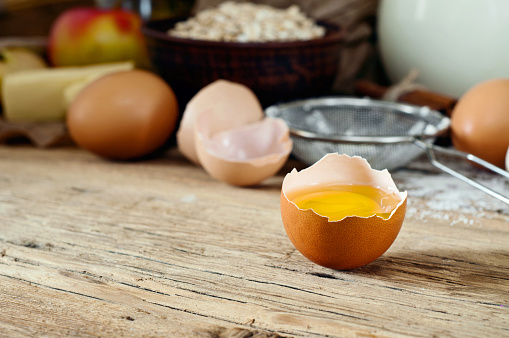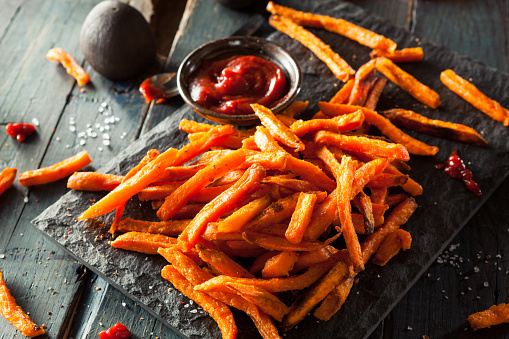Excitement is in the air for pumpkin spice lattes, knee-high boots and autumn leaves. Fall is here. But so is cold and flu season.
We’ve all heard recommendations from the Center of Disease Control (CDC): Wash your hands, don’t share food or drink, and don’t touch your face.
But did you know that what you put on your plate matters, too? That’s right: When it comes to cold and flu season, food really can be your secret weapon.
The Academy of Nutrition and Dietetics recommends the following nutrients for immune boosting benefits: Protein, vitamin A, vitamin C, vitamin E and zinc. Including adequate amounts of healthy fats and protein may also aid in cold prevention.
To make navigating immune-boosting nutrition easy, we’ve listed six foods to stock up on this winter to ensure you get important cold fighting nutrients:
1. Eggs
Eggs are nutritional powerhouses that are easy to incorporate into your daily routine. They’re chock full of protein, and protein is critical to the formation of bacteria and virus fighting antibodies, says Wesley Delbridge, R.D., a spokesperson for the Academy of Nutrition & Dietetics.
And it doesn’t stop there. Eggs are one of the few food sources of vitamin D. Research has shown that vitamin D benefits your immune system, muscle function, heart health, brain development and mood.
Hard boil a dozen eggs on Sunday. Pop them in your bag for a quick mid-morning snack, or slice atop your afternoon salad. One large egg counts as one PowerFuel for those following the Nutrisystem program.
2. Citrus Fruits
Citrus fruits contain one of most well-known antioxidants, vitamin C. Vitamin C protects you from infection by increasing antibodies and boosting immunity. Studies have not confirmed that vitamin C will prevent colds, but recent research suggests the use of vitamin C may shorten the duration and severity.
Consume whole versions of citrus fruit to limit added sugar (think oranges instead of orange juice). The whole fruit contains loads of fiber that will keep you feeling fuller longer.
The options are colorful and fruitful. Two medium kiwi or mandarin oranges, one medium orange or one cup of papaya or pineapple are wonderful options for those on the Nutrisystem program. Each counts as one SmartCarb; dense in nutrients with a low to medium score on the Glycemic Index.
3. Yogurt
Listen to your gut. It may hold the key to avoiding sniffles and fevers as the snow comes rolling in. Your gut contains both good and bad bacteria, and is responsible for more than just digestion. It accounts for 50 percent of the body’s immune response. The good bacteria boosts immunity and decreases cold duration, keeping you healthier and in fighting shape if that cold does come knocking on your door.
Choosing yogurt with live and active cultures will boost gut health with its powerful probiotics. Greek yogurt works well too and adds some additional protein keeping you fuller, longer. Choose plain yogurt and add fresh fruit to limit added sugars. One cup of nonfat yogurt counts as one Powerfuel on the Nutrisystem program.
4. Sunflower seeds
Sunflower seeds may be small but they are mighty. They pack a double punch with vitamin E and zinc. Vitamin E fights those filthy free radicals roaming around your body that will weaken your immune system leaving you more susceptible to colds and flu.
Zinc is rarely mentioned, but very important to your health. Zinc has the ability to function as an antioxidant and also prevents free radicals from injuring cells. In 2013, researchers found that zinc prevents the immune system from excess inflammation. This gives us some insight as to why zinc lessens the severity and duration of our colds.
Zinc is often found in over-the-counter lozenges, but its best to consume zinc in its food form. Too much zinc can have adverse health effects so don’t overdo it. Rosanne Rust, MS, RDN, LDN of Rust Nutrition recommends adding sunflower seeds to salads or rice dishes for both a zinc and vitamin E boost.
5. Sweet Potatoes
The delicious orange potato has gained popularity over the years. Sweet potato mash, fries, chips and noodles are appearing in recipes and on restaurant menus.
This is good news for cold and flu season since these little sweeties are chock full of vitamin A, a fat soluble vitamin that helps fight off infection. One medium sweet potato provides more than the daily recommendation for vitamin A.
It’s no surprise that most germs invade your body through your eyes, nose, and throat. Vitamin A helps keep these mucus membranes open and healthy, aiding in the fight against cold season. As most vitamins are multifunctional, vitamin A not only prevents germs from entering your body but increases your body’s immune response if they do.
A half cup serving counts as one SmartCarb on the Nutrisystem program.
6. Tea
As far back as 2003, studies have confirmed tea’s immune-boosting effects. Researchers believe tea can fight against infection by priming the immune system for potential attacks.
A study published in 2011 by BMC Complimentary & Alternative medicine suggested green tea prevented healthcare workers from contracting the flu. The magic ingredient? Catechins, antioxidants found in green tea. As an extra bonus, catechins have been proven to fight prostate, colorectal and breast cancers.
Chamomile tea has been deemed an immune-boosting herbal tea. The Journal of Agriculture Food Chemistry published a study in 2005 suggesting that chamomile tea boosted antibacterial activity when participants consumed five cups a day.
Unsweetened is a free food for those on the Nutrisystem program. Add some flavor with squeezed lemon, peaches, mint or ginger for a warm treat. Sensitive to caffeine? Herbal teas are naturally caffeine free.
The post Fight the Flu: 6 Foods For a Stronger Immune System appeared first on The Leaf.




Comments
Post a Comment